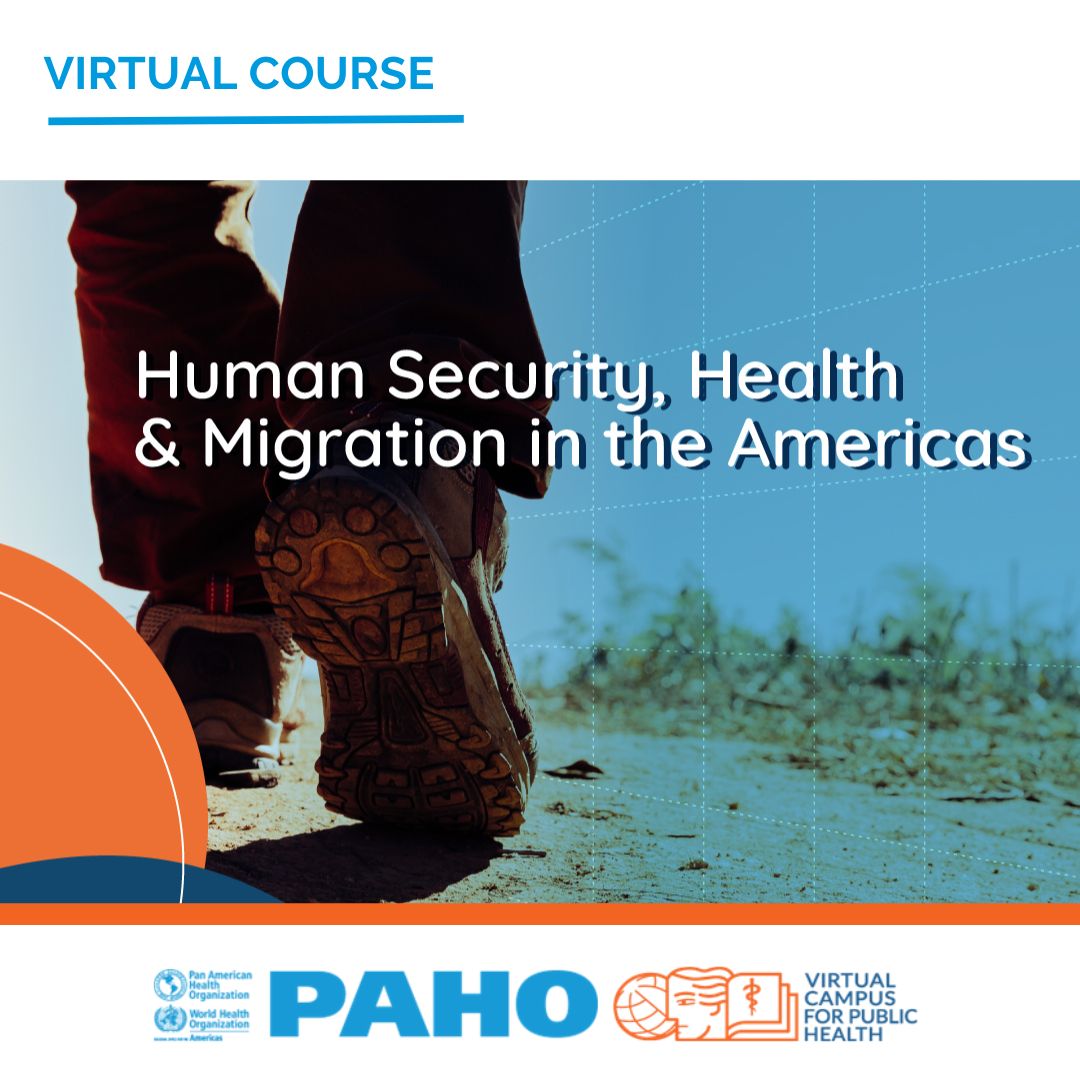Human Security, Health, and Migration in the Americas (ENG) - 2023

This course is a 5-module interactive online self-study course created by the Pan American Health Organization (PAHO) with the support of the International Organization for Migration (IOM). It seeks to develop awareness on how the human security approach can be used to better address health and migration challenges in the Region of the Americas.
Human security is defined as a “political philosophy, policymaking concept, and approach for programming to protect the vital core of all human lives in ways that enhance human freedoms and human fulfillment”. It is underpinned by the concept of promoting freedoms from want, from fear, and to live in dignity, with an approach that seeks to address cross-cutting issues through “people-centered, comprehensive, context-specific and prevention-oriented responses that strengthen the protection and empowerment” of everyone (UN 2003; UNTFHS n.d.).
Sponsored by the United Nations Trust Fund on Human Security (UNTFHS), this course aims to improve understanding of the human security approach and how it can specifically be used as a successful operational tool to advance universal access to health and universal health coverage, as well as the Sustainable Development Goals, while contextualizing the added value of human security to health and migration in countries in the region.
Purpose
This course aims to raise awareness and build capacity among policymakers, civil society, academics, and other practitioners working in health and migration sectors, on the implementation of the human security approach as an operational framework to support an integrated, people-centered, and sustainable response to health and migration in the region.
By the end of the course, participants will be able to understand the basic concepts related to human security and how the human security approach can be applied to specific health and migration issues in the region, with a perspective of better understanding multidimensional root causes. This includes addressing cross-cutting issues such as gender, equity, ethnicity, and human rights, as well as the added value that the human security approach brings to promoting a people-centered, participatory and development response to health and migration issues.
Learning Objectives
As a result of participating in this course, learners will have the knowledge, capacities, and tools to:
- Define and apply key concepts and principles of human security, migration, and health, as well as relevant international and regional policies and frameworks;
- Distinguish among different categories of migrants and identify their common and distinct health needs, risks, and experiences that affect migrant and host community human security;
- Identify gaps in health systems and services that span populations and/or border spaces, as well as tools and strategies to mitigate harm for migrants and host populations, especially involving multi-agency and multi-country cooperation;
- Use situational and/or conflict analysis, stakeholder mapping, do-no-harm, and cross-cultural analysis tools to plan interventions to improve health and human security in migrant-receiving communities.
Audience Profile
This course is designed to guide public officials, decision-makers, members of civil society, and other practitioners in sectors related to health and migration, to build an integrated, people-centered, and sustainable response to health and migration issues. The course seeks to develop awareness on how the human security approach can be used to better address health and migration challenges in the Region of the Americas, through multistakeholder, multi-agency, and multi-country cooperative initiatives.
Length
Approximately 10 hours. As this is a self-paced learning course, learners can regulate the speed and maximum time they spend on each portion of the course.
Learning Methodology
This is an asynchronous, self-management course in which the participants can complete it at their own pace. The exercises are self-reflective and will serve to regulate one’s own learning and identify those elements or units that may need more revision from the course participant.
The course incorporates several key elements that are consistently included in each more. These include:
- A ´roadmap´ or table of contents to let the learner know what to expect;
- A multimedia explanation of the content within the module;
- At least one, or more, application/focus area or case studies;
- Assessment question at the end of the module to evaluate learning;
- Reflective questions to guide further discussion;
- A set of required and recommended readings;
- A bibliography of the works that were referenced.
Course structure
- Module 1: Introduction
- Module 2: Definitions and basic concepts
- Module 3: Migration
- Module 4: Health
- Module 5: Putting the human security approach into action & conclusions
